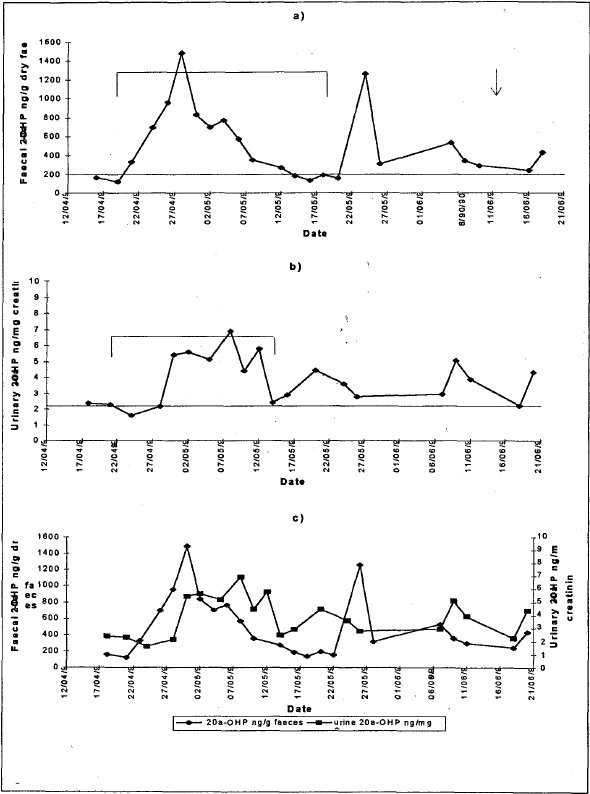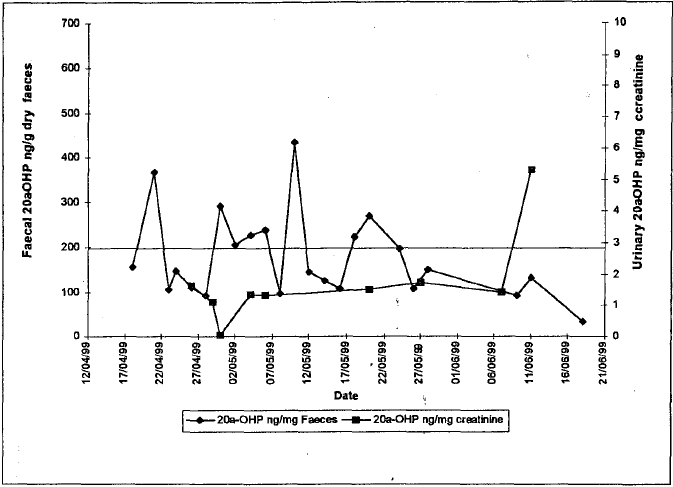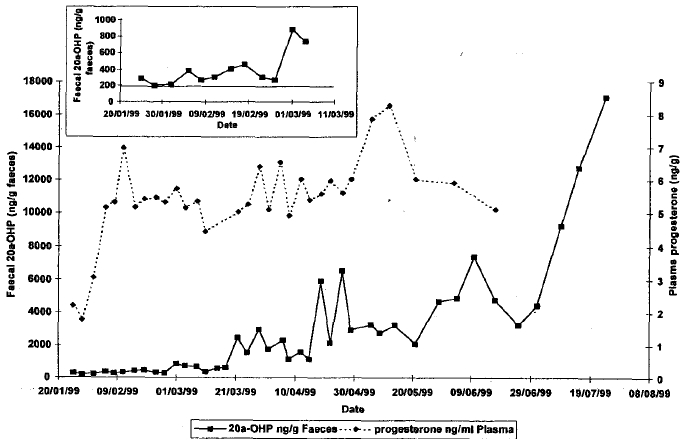Non-Invasive Hormone Analysis for Reproductive Monitoring in Female Southern White Rhinoceros (Ceratotherium simum simum)
Abstract
The reproductive status of captive female southern white rhinoceros (Ceratotherium simum simum) was monitored non-invasively using an enzyme-linked immunosorbent assay measuring fecal 4-pregnen-20α-o1-3one (20α-hydroxyprogesterone, 20α-OHP). Matched fecal and plasma or urine samples were collected two to three times per week from eight female animals, housed at three zoological establishments in the UK for 6 mo. The fecal samples were dried, crushed and the steroid hormones extracted with potassium hydroxide and methanol prior to analysis. The data were contrasted with urine or plasma steroid concentrations determined using previously validated assays1 for confirmation of our findings.
Using this method we identified two pregnant, five cyclic and one acyclic animal. The two pregnant females produced live calves 15 mo after the predicted conception date. In cyclic females (Figure 1) the mean (±SD) fecal immunoreactive 20α-hydroxyprogesterone concentrations varied between 501.2±158.1 ng/g dry feces during the luteal period and 158.1±14.7 ng/g dry feces in the inter-luteal period, which corresponded with the period when matings were observed. The acyclic female (Figure 2 a–c) showed no comparable cyclic variation in hormone excretion; sample concentrations remained around 177.3±97.5 ng/g dry feces. In the pregnant animals (Figure 3), concentrations of fecal progestagens rose significantly above mean luteal levels after the first 50 days of gestation, and remained elevated at an average of 3637.5±192 ng/g dry feces until the end of the study. The mean estrous cycle length was 32±1.85 days, with mean inter-luteal and luteal periods of 7.6±1.3 and 25.6±1.6 days, respectively. Nine animals from two of these collections were further monitored over an 18-mo period using fecal samples alone. Based on our previous findings we were able to identify five pregnancies, one acyclic animal, one acyclic animal that began to cycle irregularly, one animal with approximate 32-day cycles and one female was sampled too irregularly for data to be interpreted. Post-partum anestrus was identified in three of the females after they gave birth with levels consistently below the mean inter-luteal concentration. These data demonstrate that under appropriate management conditions, this technique provides a valuable asset for reproductive monitoring and herd management in the southern white rhinoceros.
Figure 1. a) Fecal and b) urinary profile of a cyclic female southern white rhinoceros; c) the same data plotted on the same axis to allow direct comparison

Broken lines encompass estrous cycles; arrow indicates observed mating
Figure 2. Matched fecal and urinary profiles in an acyclic female southern white rhinoceros

Figure 3. Fecal and plasma progestagen concentration in a female southern white rhinoceros

Inset shows the fecal hormone concentrations over a larger scale.
Literature Cited
1. Hindle JE, E Möstl, JK Hodges. 1992. Measurement of urinary oestrogens and 20-dihydroprogesterone during ovarian cycles of black (Diceros bicornis) and white (Ceratotherium simum) rhinoceroses. J. Reprod. Fertil. 94: 237–249.